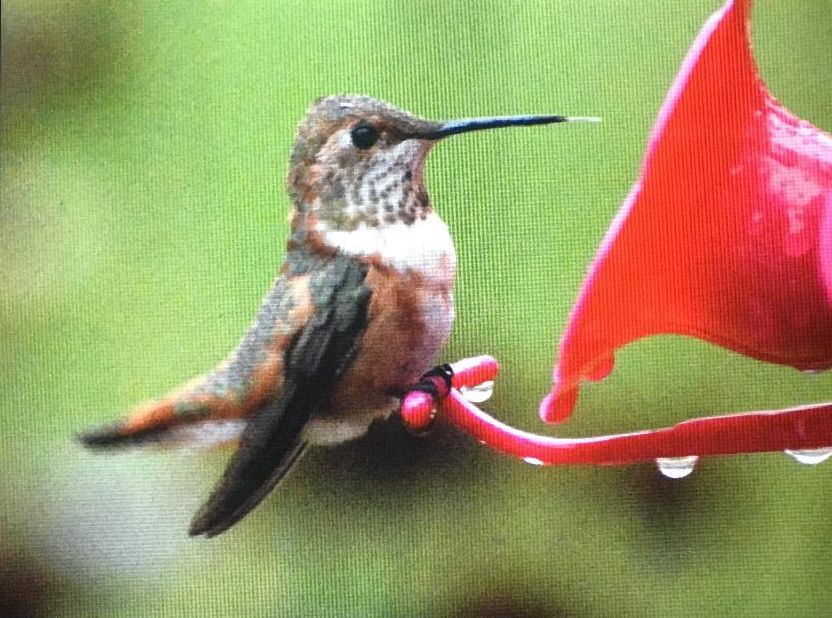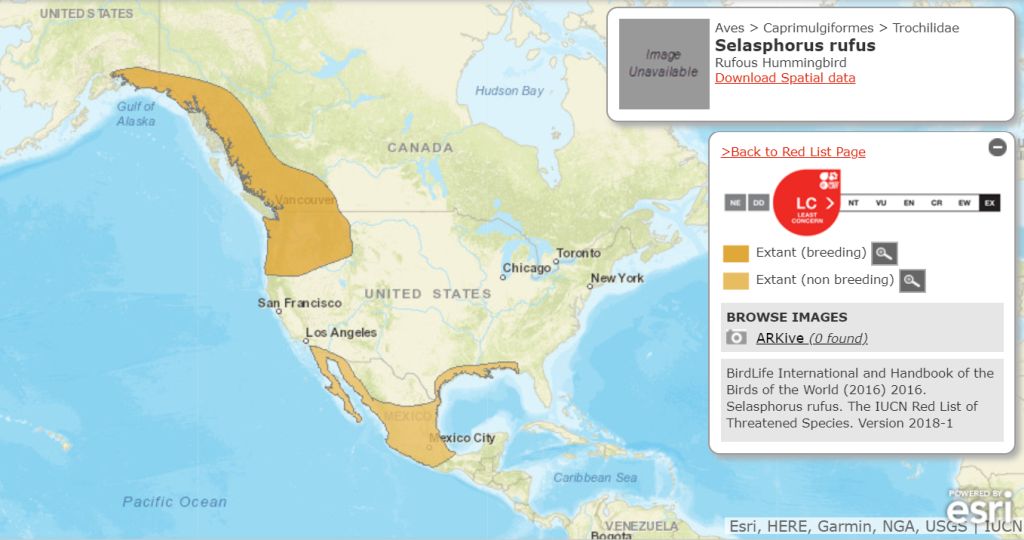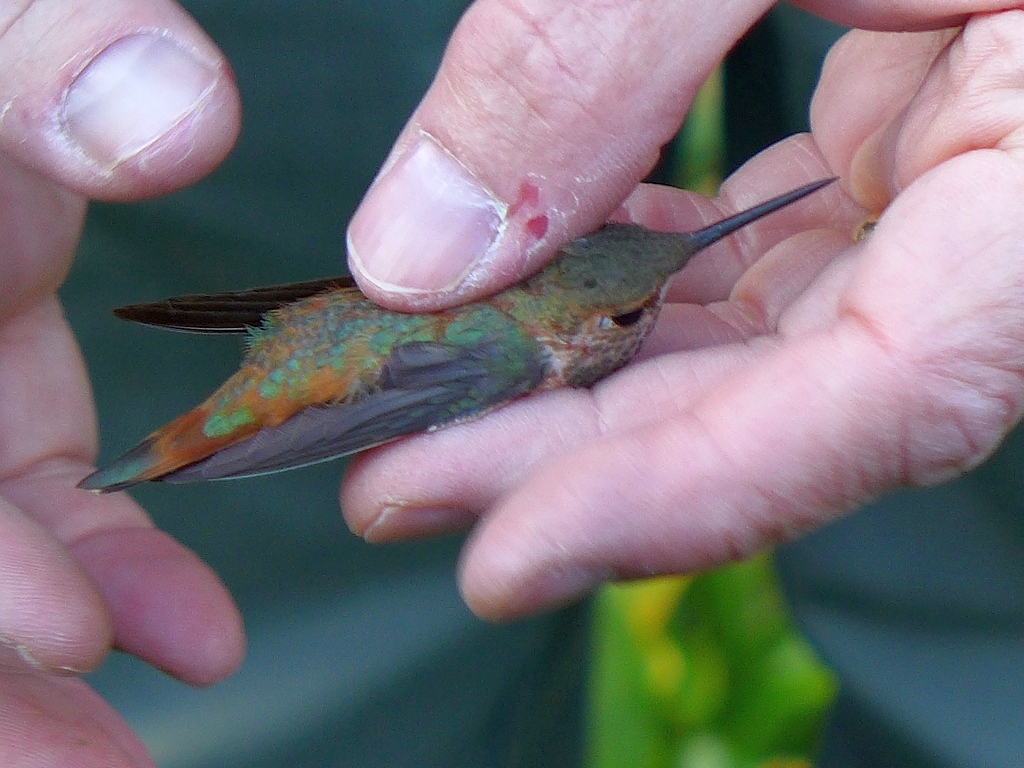
It’s November, but are you keeping your hummingbird feeders filled? Is your salvia still blooming? If so, you may see a hummingbird that’s rare in Pennsylvania.
Rufous hummingbirds (Selasphorus rufus) breed from the south coast of Alaska to western Montana and spend the winter in Mexico and along the Gulf Coast. (Click on the range map to see details.)

However, a few have compass errors that lead them east instead of south. Often these are immature birds who’ve never made the trip before.
Rufous aren’t the only western hummingbirds that make this mistake but they are the most common. Allen’s, Anna’s, calliope and black-chinned hummingbirds also come from cool climates so they can survive Pennsylvania’s autumn weather but they must have food — midges and other insects, nectar, or sugar water.
On Halloween Donna Foyle looked out her window in Pittsburgh and saw a visitor from the Pacific Northwest. A rufous hummingbird, pictured above, had flown in for a sip at her feeder. On Saturday afternoon 3 Nov, Bob Mulvihill banded it and confirmed it’s a first-year male Selasphorus rufus.

It’s unclear how long this bird will stay in Pittsburgh but others may come. To give you an idea of the numbers, during the winter of 2012-2013 one hundred vagrant hummingbirds were reported in Pennsylvania. 48 of them were rufous.
So keep your hummingbird feeder filled and shelter your blooming salvia. If you see a hummingbird this fall in Pennsylvania, contact one of the hummingbird banders listed at the end of this 2016 eBird article by Wayne Laubscher and Doug Gross. In Pittsburgh contact Bob Mulvihill of the National Aviary, 412-258-1148.
p.s. Though many were watching for him, this hummingbird was last seen Sunday morning 4 Nov. He may have moved on.
(photo by Donna Foyle; screenshot of rufous hummingbird range map from IUCN Red List, click on the image to see the real map; photo of birds in hand by Kate St. John)
It came to my feeder on November 4th in the afternoon. It is still here.
Looks like I have a perminent Winter resident!
I always keep my hummingbird feeder filled through December but have never seen one after September — until this year. I first spotted it on Thanksgiving day. The temperature was in the teens that morning. The bird was at the feeder but the sugar water was frozen. I put up a fresh batch and the hummer is still visiting (today is 11/25). I’m assuming its the same bird. I hope for its sake that it finds its bearings and heads south. I may have to keep the feeder through winter.
PS, I’m in the Pittsburgh area
My little hummingbird friend is still visiting as of Dec 10. While I enjoy its visits and chatting, it is becoming challenging to keep the feeders viable in winter weather. I won’t be able to provide in the frigid weather that will come sooner or later. We will enjoy a stretch of warm temperatures in the coming days. I wonder if I should remove the feeders to encourage this bird to head south. Any thoughts?
Nathalie, removing the feeders during above freezing weather is about all you can do. Please do contact Bob Mulvihill for an expert opinion! 412-258-1148.
I live in Bakerfield California and I have many young hummingbirds feeding still. The weather is still nice here. It does get in the low 40’s and high 30’s at night. Day time it’s high 70’s for now. I’ll keep my feeder full as long as I see them.
I live in Tennessee and the date is November 24th, 2020. I rufous hummingbird has been visiting my feeder for about a month now. I love it!
It’s now Nov. 11 and I have a hummingbird coming to my feeder three or four times a day. I still have coral vine blooming in the yard. Hope he survives. A front is coming.
Kathy, of you are in the northeast this is likely a very special hummingbird: a rufous hummingbird. Let you local Audubon know.
Hello, I have a hummingbird visiting this week. Worried it’s too cold. I can’t tell which kind.
Candace, if you are in PA this may be a rare rufous hummingbird. Does it have rufous/rusty sides? Tell your local Audubon in case they/someone wants to band it.
I do believe it did. It looked mostly brownish.
I am in Pa Chester County in the Northeast.
Sounds like a rufous hummingbird to me.
We are in Cincinnati and as of today, November 21, 2021 we still have a female hummingbird frequenting our feeder.
Tell your local Audubon chapter. I’m sure they’ll want to know.